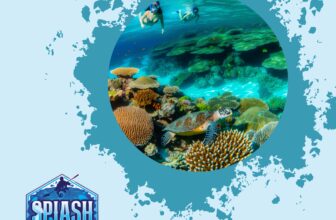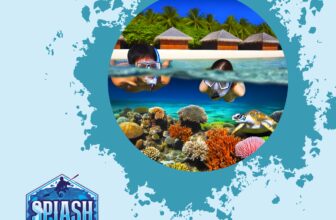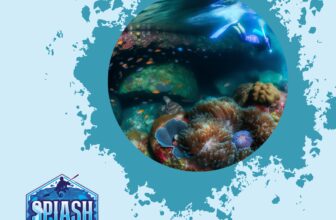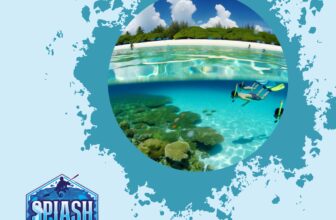
Snorkeling is an awesome introduction to the world of underwater exploration, and there’s no better place to start than the Great Barrier Reef. This guide is packed with practical advice for beginners and anyone keen to experience the vibrant reefs of Australia's most iconic natural wonder.
Introduction
The Great Barrier Reef isn't just another travel destination; it's a global icon of marine biodiversity and natural beauty. Stretching over 1,429 miles along the northeastern coast of Australia, this colossal reef system comprises more than 2,900 individual reefs and 900 islands. Recognized as a UNESCO World Heritage Site, the Great Barrier Reef boasts an array of marine life so diverse that it could keep even the most seasoned oceanographer fascinated for a lifetime.
For those new to the underwater world, snorkeling offers an accessible gateway to explore this sprawling aquatic wonderland. Unlike scuba diving, snorkeling requires minimal gear and training. Just a mask, snorkel, and fins are enough to immerse yourself in the vibrant coral gardens and swim alongside an array of sea creatures, from playful clownfish to graceful sea turtles. It’s an experience that can be both awe-inspiring and educational, making it perfect for beginners eager to uncover the mysteries of the deep. So, let’s dive in and discover why the Great Barrier Reef is the ultimate snorkeling adventure.
Why Snorkel the Great Barrier Reef?
The Great Barrier Reef isn’t just any snorkeling destination—it's the largest coral system in the world. Spanning over 2,300 kilometers (about 1,400 miles), this natural wonder is made up of 900 islands and around 2,900 individual reefs. The size alone makes it a once-in-a-lifetime experience.
Marine Life Galore
When you dip below the surface, you’re stepping into a vibrant underwater city filled with diverse marine life.
- Diverse Species: Thousands of species of fish swimming alongside you, from the iconic clownfish to the majestic manta rays.
- Variety of Creatures: The reef hosts six species of sea turtles, over 400 types of hard and soft corals, and countless other creatures like starfish, sea cucumbers, and giant clams.
The biodiversity here is unparalleled, offering beginner snorkelers a front-row seat to nature's aquatic spectacle.
Vivid Coral Gardens
Corals are the real stars of the show.
- Colorful Formations: The Great Barrier Reef features a range of breathtaking coral formations, each bursting with color and texture.
- Ecosystem Role: These coral gardens create intricate underwater landscapes that are not only stunning to look at but also play a crucial role in the ecosystem.
From the branching staghorn corals to the massive brain corals, the reef provides a unique backdrop for your snorkeling adventures.
Accessibility for All Levels
Another big plus of snorkeling the Great Barrier Reef is its accessibility.
- For Everyone: It caters to all skill levels, from absolute beginners to seasoned snorkelers.
- Protected Zones: Numerous calm, shallow waters make it a safe and comfortable environment for newcomers.
- Tour Operators: With plenty of tour operators in the area, you’ll have no trouble finding a guided tour that fits your level of experience.
Conservation and Education
Snorkeling the Great Barrier Reef also brings an added layer of value in terms of education and conservation.
- Informative Tours: Many tours include informative talks on marine biology and reef conservation.
- Conscious Impact: Understanding the delicate balance of this fragile ecosystem makes you a more informed and responsible snorkeler, crucial for the reef's preservation.
In a nutshell, snorkeling the Great Barrier Reef offers:
- Unparalleled marine life
- Vibrant and diverse coral formations
- Easy accessibility for all levels
- Educational opportunities
Whether you're looking to tick off a bucket-list item or dive deeper into the world of snorkeling, the Great Barrier Reef is the ultimate destination to start your underwater journey.
Essential Gear for Great Barrier Reef Snorkeling
Basic Snorkeling Equipment
To get started with snorkeling, you'll need a few essential items.
Mask: The mask is crucial for a clear view underwater. Look for one that fits snugly without being uncomfortable. Ensure the skirt (the part that touches your face) forms a good seal to prevent leaks.
Snorkel: This is the tube that lets you breathe while your face is underwater. There are various types, including traditional single-bend snorkels and more advanced dry-top snorkels, which prevent water from entering the tube.
Fins: These help you move efficiently through the water. Beginners should opt for short, adjustable fins that are easy to put on and take off. Make sure they fit well to avoid blisters.
Optional Gear
Wetsuit: Though optional, a wetsuit can make your snorkeling experience more comfortable. It provides thermal insulation, which is particularly useful if you plan to snorkel for extended periods or swim in cooler waters. Additionally, it offers some protection against jellyfish stings and sunburn.
Underwater Camera: Capturing the stunning marine life and vivid coral of the Great Barrier Reef is a fantastic way to remember your adventure. Waterproof action cameras or disposable underwater cameras are great for beginners who want to take photos without heavy gear or complicated setups.
Tips for Choosing the Right Equipment
- Fit and Comfort: Try on masks, snorkels, and fins before purchasing or renting them. The right fit ensures comfort and better performance in the water.
- Quality vs. Cost: While it might be tempting to go for the cheapest options, investing in good quality equipment can enhance your experience significantly. Avoid bargain-bin items that may not perform well or last long.
- Test Runs: Before hitting the reefs, test your gear in a pool or calm, shallow water. This ensures you’re comfortable with the equipment and can make necessary adjustments before diving into the ocean.
Equipping yourself with the right gear is the first step in a seamless and enjoyable snorkeling experience at the Great Barrier Reef. Once you've got your essentials, you're ready to explore one of the world's most stunning underwater spectacles!
Best Time to Visit for Snorkeling
Choosing the right time to snorkel the Great Barrier Reef can significantly enhance your experience. The best months to plan your adventure are from June to October. During these months, the weather is generally mild and dry, providing excellent visibility underwater. Additionally, the water temperatures are comfortably warm, making it ideal for spending extended periods in the water.
Weather conditions play a crucial role in your snorkeling experience. The Great Barrier Reef is located in a tropical climate, which means it experiences a wet season (November to March) and a dry season (April to October). The wet season can bring heavy rainfall, strong winds, and lower visibility underwater. Therefore, it’s advisable to plan your trip during the dry season to enjoy optimal snorkeling conditions.
Another important factor to consider is the tourist influx. The Great Barrier Reef is a popular destination, especially during school holidays and weekends. If you prefer a more tranquil experience, try to avoid peak tourist seasons. The shoulder months of May and November can offer a good balance of favorable weather and fewer crowds, providing a more relaxed snorkeling environment.
In summary, the ideal time to snorkel the Great Barrier Reef is during the dry season, specifically from June to October. Planning your trip during these months ensures better weather, clearer water, and an overall more enjoyable experience. Happy snorkeling!
Top Snorkeling Spots in the Great Barrier Reef
Heart Reef
Heart Reef is one of the most iconic spots in the Great Barrier Reef, renowned for its naturally heart-shaped coral formation. Although snorkeling directly over the Heart Reef isn't allowed to protect its delicate structure, you can still explore the surrounding reefs in the Whitsunday Islands. The crystal-clear waters provide excellent visibility, and you can expect to see a vibrant array of coral types and a multitude of tropical fish.
Ribbon Reefs
Situated further north, the Ribbon Reefs offer a series of long, narrow reef strips that are perfect for snorkeling. This area boasts incredibly diverse marine life, including giant clams, nudibranchs, and a plethora of colorful fish. The Ribbon Reefs are also known for their relatively calm waters, making it a great choice for beginners worried about strong currents.
Green Island
Located just 27 kilometers off the coast of Cairns, Green Island is a popular spot for day trips and easily accessible for snorkelers of all skill levels. The island is surrounded by a fringing reef teeming with marine life such as sea turtles, giant wrasse, and an assortment of colorful parrotfish. The shallow waters around Green Island make it an ideal spot for novice snorkelers who can enjoy the beauty of the reef without venturing into deeper waters.
Fitzroy Island
Fitzroy Island offers a blend of rainforest and reef, making it a unique snorkeling destination. Just a short boat ride from Cairns, the island's clear, shallow waters are perfect for beginners. Nudey Beach, in particular, is a top spot for snorkeling, offering easy access to coral gardens and a multitude of marine species including clownfish, angelfish, and sometimes even reef sharks. The added benefit of Fitzroy Island is its hiking trails, which offer great views and the chance to explore the island's natural beauty.
In summary, the Great Barrier Reef presents a multitude of snorkeling spots, each offering a unique experience. Whether you’re captivated by the iconic Heart Reef, the diverse Ribbon Reefs, the accessible Green Island, or the scenic Fitzroy Island, there's a perfect spot waiting for you to explore.
Guided Tours vs. DIY Snorkeling
Pros and Cons of Taking Guided Tours
Opting for a guided tour comes with its own set of advantages and drawbacks.
Pros:
- Expert Knowledge: Guides are usually well-versed in local marine life and the best snorkeling spots, making your experience richer and more educational.
- Safety: Tours often include safety briefings and ensure that a professional is nearby, which is particularly reassuring for beginners.
- Convenience: Most guided tours provide necessary equipment, along with amenities like transport and meals, allowing you to focus purely on the experience.
- Environmental Awareness: Certified tours often follow sustainable practices to protect the fragile reef ecosystem.
Cons:
- Cost: Guided tours can be pricey, especially for families or groups.
- Crowds: You might find yourself snorkeling in more crowded spots as tours generally take you to the most popular areas.
- Time Restrictions: Tours have set schedules, limiting your freedom to explore at your own pace.
Benefits of Snorkeling Packages for Beginners
For those new to snorkeling, snorkeling packages offer several benefits:
- All-Inclusive: These packages typically cover equipment rental, tutorials, and refreshments, making it an excellent one-stop-shop for beginners.
- Learning Curve: Packages usually include introductory sessions where instructors teach you how to use the gear and basic snorkeling techniques.
- Support: Immediate assistance is available if you encounter any difficulties or have questions.
Tips for Planning a DIY Snorkeling Trip
Prefer to strike out on your own? Here are a few tips to ensure your DIY snorkeling adventure goes smoothly:
- Research: Know the best entry points, tides, currents, and weather forecasts. Local forums and snorkeling sites can be quite helpful.
- Gear Up: Make sure your gear fits comfortably and is in good working condition. Don’t forget extras like reef-safe sunscreen and a dry bag.
- Buddy System: Always snorkel with a partner for safety. Let someone know your plans and expected return time.
- Stay Within Limits: Stick to areas close to the shore and avoid strong currents. Respect local guidelines and marine life to ensure a safe and enjoyable experience.
- Hydrate and Fuel Up: Snorkeling can be exhausting, so bring plenty of water and some snacks to keep your energy up.
By carefully weighing the pros and cons and planning appropriately, you can tailor your Great Barrier Reef snorkeling experience to match your comfort level and interests. Whether you choose a guided tour or a DIY adventure, the Reef’s vibrant underwater world awaits!
What to Expect Underwater
Overview of the Marine Life You Might Encounter
Once you dip below the surface, get ready to be amazed. The Great Barrier Reef is teeming with an astonishing variety of marine life. You'll swim alongside vibrant schools of fish darting between coral formations, and you might even catch sight of majestic sea turtles gliding through the water. Look out for the ever-popular clownfish nestled within anemones, and keep an eye on the sandy seafloor for the occasional shy reef shark or graceful stingray. The biodiversity here is off the charts, so every snorkel session can bring new and exciting encounters.
Importance of Reef-Safe Sunscreen
Before you even get in the water, it’s crucial to think about how your actions can affect this delicate environment. Traditional sunscreens can contain harmful chemicals like oxybenzone and octinoxate that contribute to coral bleaching. Opt for reef-safe sunscreen to minimize your impact. These products are free from harmful chemicals and are made to protect both your skin and the marine ecosystems. It’s a small but significant step in preserving the reef for future generations.
Basic Snorkeling Etiquette to Protect Marine Life
Respecting marine life and coral structures is key to a positive snorkeling experience. Here are a few basic etiquette tips:
- Look, Don’t Touch: Coral reefs are fragile living organisms. Avoid touching or stepping on them.
- Maintain Buoyancy Control: Stay horizontal and avoid kicking up sand, which can smother corals and harm small creatures.
- Keep a Safe Distance: Observe marine life from a distance. Don’t chase or harass animals.
- Stay Calm: Move slowly and calmly. Not only does this minimize disturbance to wildlife, but it also conserves your energy and lets you enjoy the underwater scenery longer.
By following these guidelines, you’ll help protect the Great Barrier Reef while ensuring a more enjoyable experience for yourself and others.
Booking and Preparing for Your Snorkeling Adventure
How to Find and Book Snorkeling Tours or Packages
When booking your snorkeling trip, follow these steps to ensure a seamless experience:
-
Research Reputable Tour Operators:
- Check online reviews on platforms like TripAdvisor or Google to gauge customer satisfaction.
-
Prioritize Safety:
- Select operators who prioritize safety and offer good equipment.
-
Knowledgeable Guides:
- Look for tours with experienced and knowledgeable guides.
- Booking:
- Book directly through the operator’s website or through a trusted travel agency.
Preparing Physically for Snorkeling
Snorkeling requires more than just basic swimming skills, especially for beginners:
-
Swimming Skills:
- Focus on improving your swimming skills as being comfortable in the water is crucial.
-
Breath Control:
- Practice breath control exercises to make your experience more relaxed.
-
Training Courses:
- Sign up for a basic snorkeling course. Some tour operators offer training sessions for beginners.
Safety Tips and Precautions to Keep in Mind
Safety should be your top priority while snorkeling. Follow these tips to ensure a safe adventure:
-
Buddy System:
- Always snorkel with a buddy; never go alone.
-
Guide Briefings:
- Pay attention to briefings given by your guide, especially concerning water conditions and potential hazards.
-
Life Jacket:
- Wear a life jacket if you're not confident in your swimming abilities.
-
Reef-Safe Sunscreen:
- Use reef-safe sunscreen to protect both your skin and the delicate coral ecosystems.
-
Hydration:
- Stay hydrated throughout the adventure.
-
Respect Currents:
- Be mindful of the currents. If you feel tired, take a break and rest on the boat.
Being well-prepared and aware will make your snorkeling adventure not only safe but also incredibly rewarding.
Additional Resources
To help you further on your snorkeling journey, here are some handy resources that cover a wide range of snorkeling destinations and tips:
-
Discover the Best Caribbean Snorkeling Spots for an Unforgettable Underwater Adventure: A comprehensive look into the top snorkeling spots in the Caribbean, ideal for beginners seeking new adventures.
-
Top Hawaii Snorkeling Locations: Dive into Crystal Clear Waters and Vibrant Reefs: Explore the best snorkeling spots in Hawaii, filled with useful information on where to find the clearest waters and most vibrant reefs.
-
Snorkeling Guides and Tips: A collection of snorkeling guides and expert tips to enhance your underwater experiences. Perfect for those looking to fine-tune their skills.
- Diving and Snorkeling Resource Articles: Dive deeper into a wealth of articles that cover both snorkeling and diving. Great for expanding your knowledge about underwater exploration.
These resources will not only prepare you for snorkeling the Great Barrier Reef but will also open up new destinations and techniques for your snorkeling adventures.
Conclusion
Snorkeling the Great Barrier Reef isn’t just an activity—it’s a journey into one of the most vibrant ecosystems on the planet. From colorful corals to an incredible variety of marine life, the reef offers endless underwater wonders for rookies and seasoned snorkelers alike.
Exploring the reef can be a transformative experience, opening your eyes to the beauty and complexity hidden just below the surface. Whether you choose a guided tour for peace of mind or strike out on your own, the adventure promises awe and education alike.
So take the plunge. There's an entire underwater world waiting for you, ready to amaze and inspire. Make your plans, pack your gear, and get set to snorkel the Great Barrier Reef—where unforgettable memories are made, one dive at a time.







